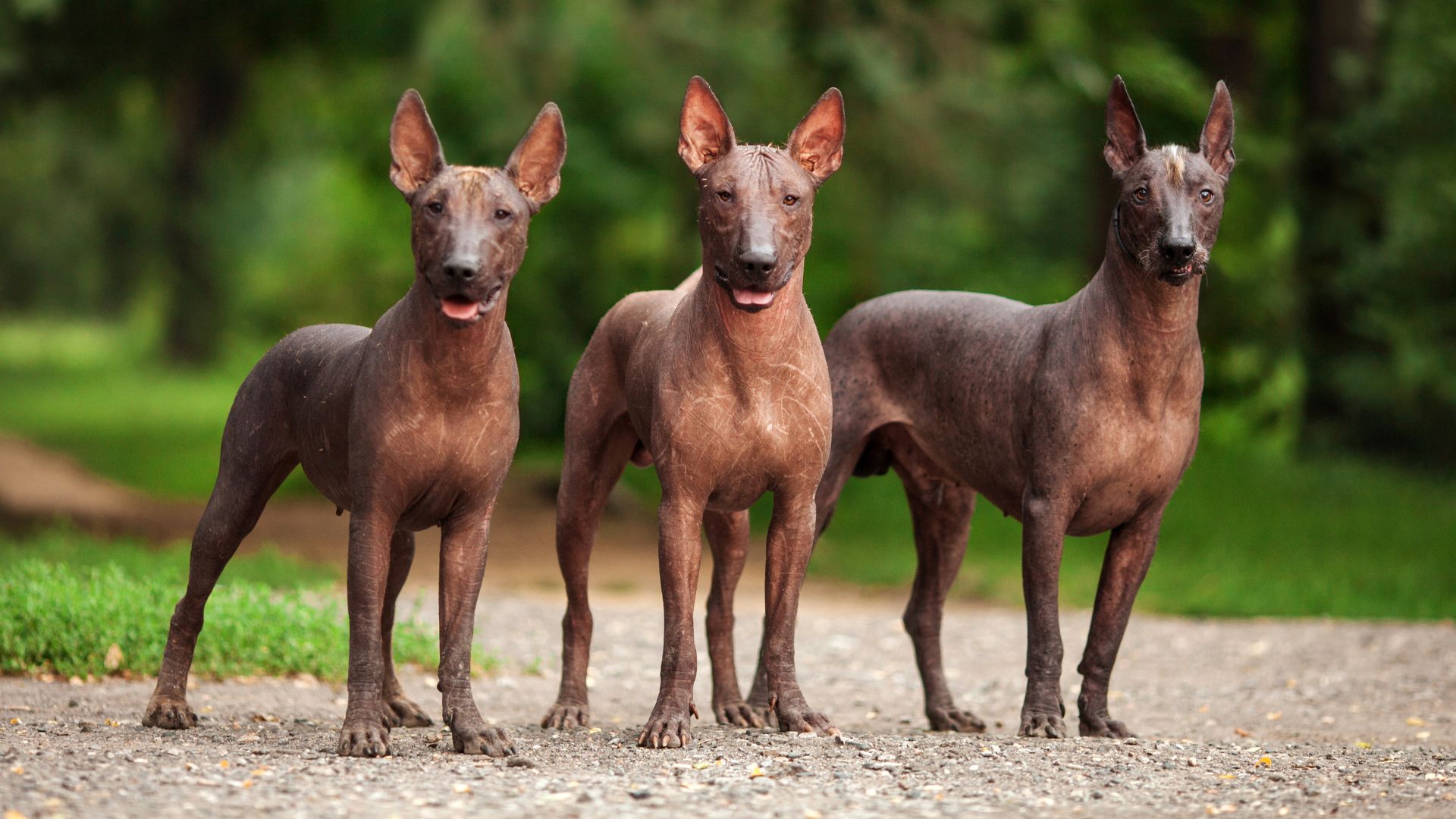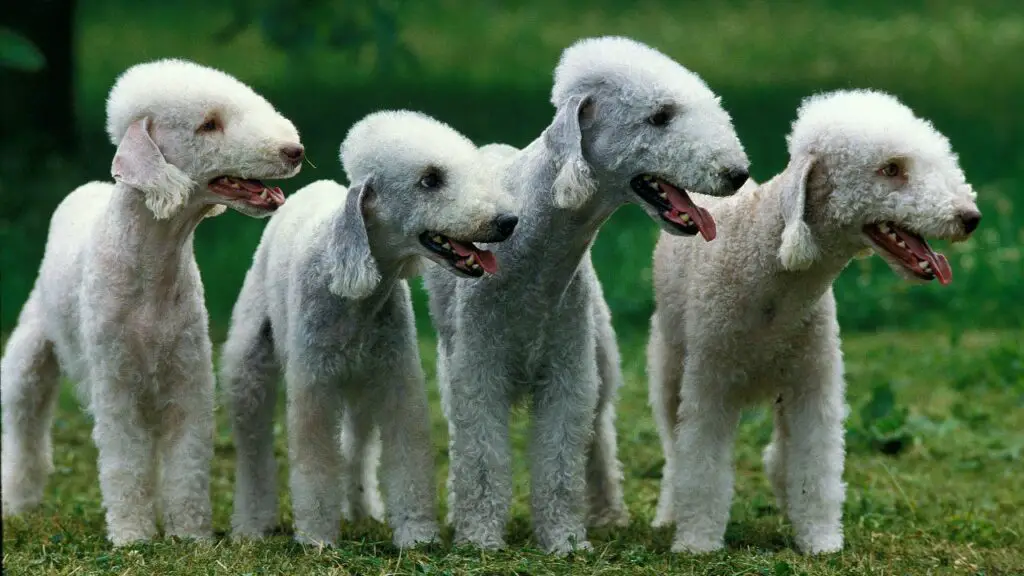In a world dominated by popular breeds like Labrador Retrievers and German Shepherds, the realm of rare dog breeds often remains a well-kept secret among enthusiasts. These unique canines, with their distinct appearances and histories, captivate the hearts of those fortunate enough to encounter them. From ancient lineages to breeds honed for specific purposes, each rare dog tells a story of cultural heritage and survival. In uncovering the nine most elusive and lesser-known breeds, prepare to be intrigued by their unique characteristics and the extraordinary paths they’ve traveled through time and geography to earn the title of the rarest.
Dogs have been our loyal companions for centuries, evolving from working partners to beloved pets. While many of us are familiar with popular breeds, there’s a whole world of rare and exquisite dogs that remain hidden gems. Imagine a dog so unique it feels like discovering a secret treasure—these rare breeds bring their own special charm and history to our lives.
The AKC registers 200 dog breeds, but it’s hard to say exactly how many dog breeds are out there worldwide. Even if you know many mixed-breed dogs, there are still some lesser-known breeds you might not have heard of.
At WAF, we believe every dog has a story worth telling. Join us on a journey to uncover these rare breeds, each with its own fascinating qualities and deep histories. Discover the joy and wonder of meeting these extraordinary dogs—each one a reminder of the incredible diversity and beauty that exists in the canine world.
1. Bergamasco Sheepdog
The Bergamasco Sheepdog is a rare breed that nearly disappeared after World War II. This ancient breed was originally used to herd sheep in the rugged mountains of Persia.
After the war, the demand for wool dropped, and fewer shepherding dogs were needed. The Bergamasco is a skilled herding and flock guardian dog, capable of working with a shepherd or managing a flock on its own. They are excellent problem-solvers, moving sheep from valley to valley while keeping calm and gentle to avoid disturbing the flock.
One of the Bergamasco’s most distinctive features is its unique coat. It consists of three types of hair that form flocks or mats, creating flat, felted layers. According to Bergamasco Sheepdog Club of America, the breed is slightly longer than tall, with its length about 5 to 6 percent greater than its height at the shoulders.
2. Chinook
The Chinook is one of the few dog breeds created in the U.S. and is named after one of Arthur Treadwell Walden’s lead sled dogs, who helped haul supplies for Admiral Richard Byrd’s first expedition to Antarctica.
Known for its speed, endurance, and athleticism, the Chinook was developed in the early 1900s by Walden on his New Hampshire farm. According to Purina, he used a mix of Mastiff-type dogs, Greenland Huskies, and German and Belgian Shepherds.
Originally bred for sled pulling, Chinooks excel in sports like sledding, skijoring, bikejoring, and scootering. They also enjoy participating in agility, obedience, rally, tracking, and lure coursing. Their thick coat offers protection and needs minimal grooming.
3. Catahoula Leopard Dog
Catahoula Leopard Dogs are relatively rare outside of the Louisiana and Gulf Coast areas, where they are more common. They are hard to find in other parts of the U.S. and nearly impossible to come across abroad.
This breed has a diverse ancestry, including Mastiffs, Greyhounds, Bloodhounds, Beaucerons, and red wolves. Catahoulas have proven their worth over the centuries as exceptional hunting, herding, working, guarding, and family dogs. ASPCA states that their significance was recognized in 1979 when they were named the official state dog of Louisiana.
Catahoulas are large, muscular dogs with floppy ears and a long, slightly curved tail. Their coats range from short to medium length, with shorter coats having a sleek appearance.
4. Otterhound
Big, lively, and affectionate, the Otterhound was originally bred in medieval England for the now-banned sport of otter hunting. This rare breed is distinguished by its dense, shaggy coat, webbed feet, and strong swimming skills.
Otterhounds are built for the water, with a waterproof coat and powerful webbed feet that make them excellent swimmers. Their broad chest and strong shoulders enable them to swim for long periods without getting tired.
With a large, sensitive nose, Otterhounds can track an otter’s scent underwater over great distances. AKC says that their size and strength also made them capable of handling the sharp claws and teeth of a 20-pound otter.
5. Bedlington Terrier
The Bedlington Terrier is a small, distinctive English breed that resembles a lamb with a hint of poodle. Known for its tufted, lamb-like face, pear-shaped head, curly coat, and gracefully arched back, this unique and charming dog is also quite rare.
Part of their rarity comes from an inherited liver disease that affected many of the breeds in the 1970s and 1980s.
Named after the mining town of Bedlington in England where they originated, these terriers are delightful family companions with a playful, clownish side. Despite their cuddly nature, Bedlington Terriers are alert watchdogs and versatile athletes, showing fierce protectiveness towards their loved ones.
6. Swedish Vallhund
The Swedish Vallhund, a long and low dog with Viking roots, is a smart and sociable herder known for its boundless energy and cheerful attitude. With a dense sable coat and sturdy build, Vallhunds have a rugged, no-frills appearance that suits both suburban backyards and ancient Viking longships.
The Swedish Vallhund nearly went extinct in the 1940s but was revived thanks to a dedicated breeding program led by Swedish Count Bjorn Rosen and K.G. Zettersten. Relatively new to the United States, the first litter of Swedish Vallhunds was bred here in 1986. The breed gained recognition from the AKC in 2007.
Their unique design, long and low to the ground, resembles their distant cousins, the corgis, and is perfect for nipping at the heels of cattle while avoiding kicks. Vallhunds are built for balance, power, and smooth movement, making them both lively and efficient herders with a zest for life and distinctive vocalizations.
7. Finnish Spitz
The Finnish Spitz is a breed with a long history, originally developed as a hunting dog and now celebrated as Finland’s national dog. AKC points out that for many years, it was a purebred breed due to its isolation from other dog breeds.
In the 19th century, improved transportation brought many different breeds to Scandinavia, leading to a mix that nearly wiped out the Finnish Spitz as a pure breed by 1880. Fortunately, two Finnish hunters took on the task of preserving it.
Today, the Finnish Spitz is known for its independence and intelligence. It requires early, consistent training with positive reinforcement and thrives on regular exercise and socialization. While it is common in Finland, the Finnish Spitz remains rare globally due to limited breeding.
8. Norwegian Lundehund
The Norwegian Lundehund was originally bred to hunt puffins on the islands off Norway’s west coast. This breed has several unique traits that harken back to primitive dogs, which were lost in modern breeds.
As puffin hunting with nets became more common and taxes on Lundehunds made them expensive to keep, their numbers began to decline. By the early 20th century, the breed was almost extinct.
One of the Lundehund’s most distinctive features is its six fully developed toes on each foot. Additionally, this dog can close its ears to keep out dirt and water, a handy trait for navigating narrow burrows and passages.
9. Tibetan Mastiff
The Tibetan Mastiff is one of the most expensive dog breeds in the world, partly due to its pure bloodline. This ancient breed’s origins are shrouded in mystery, with its exact history unknown due to Tibet’s isolation.
After China’s invasion of Tibet, the Tibetan Mastiff became endangered. However, enough of these dogs survived in remote villages to support breeding programs in the U.S. during the 1970s.
Known as the ultimate guardian dog, the Tibetan Mastiff is watchful, aloof, and imposing. Despite their intimidating presence, these athletic dogs are mellow and calm at home, deeply devoted to their families, but reserved and territorial with strangers.
Conclusion
Exploring the world of rare dog breeds reveals a fascinating array of unique and extraordinary animals. From the New Guinea Singing Dog’s wild origins to the Thai Ridgeback’s striking appearance and the West African Sighthound’s impressive hunting skills, these breeds showcase the incredible diversity within the canine world.
Each rare dog breed offers something special, whether it’s the athletic prowess of large hunting breed dogs or the distinctive double coat of the Cesky Terrier. Their histories and traits reflect their specialized roles, whether as gun dog breeds, lake dog breeds, or guardians against wild boar.
These rare breeds, including the athletic Thai Ridgeback and the resilient West African Sighthound, are more than just uncommon pets—they are living pieces of history and culture. By learning about and appreciating these rare dog breeds, we not only celebrate their unique characteristics but also contribute to their preservation.
Each breed, from the versatile Cesky Terrier to the determined New Guinea Singing Dog, enriches our lives with its distinctiveness and charm, reminding us of the profound bond between humans and dogs throughout history.
In conclusion, exploring the nine rarest dog breeds showcases the incredible diversity and history that exists within the canine world. These unique breeds, often overlooked, offer fascinating insights into the rich tapestry of cultures and environments that have shaped them. From their distinctive physical features to their unique temperaments, these rare breeds deserve greater recognition and appreciation. Highlighting them not only broadens our understanding of dogs but also encourages the preservation of these exceptional breeds. Whether for their companionship or historical significance, these rare dog breeds add immeasurable value to the world of dog enthusiasts and beyond.












